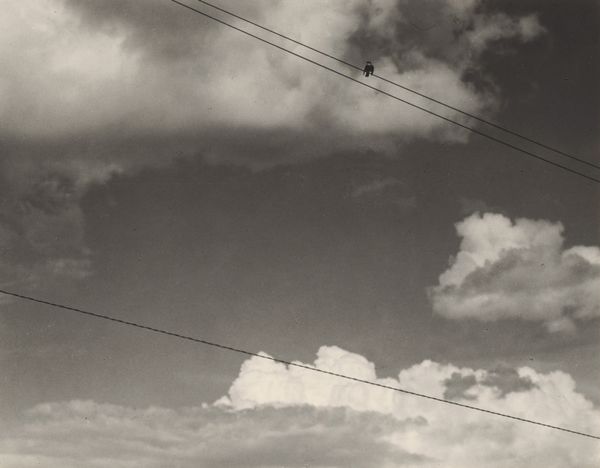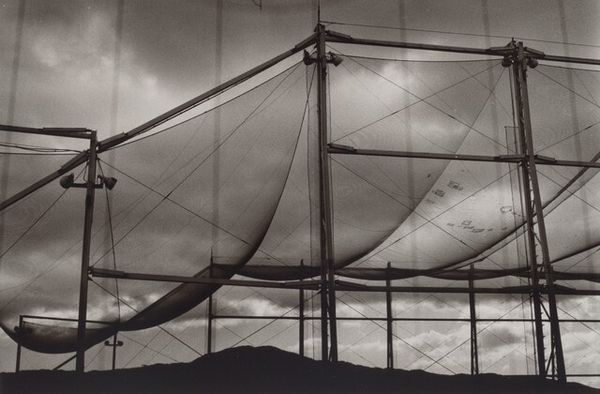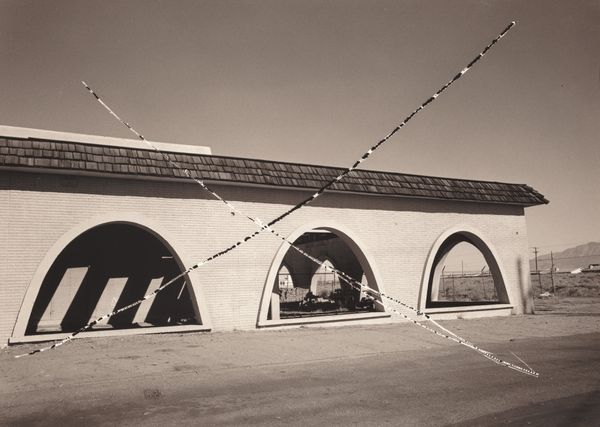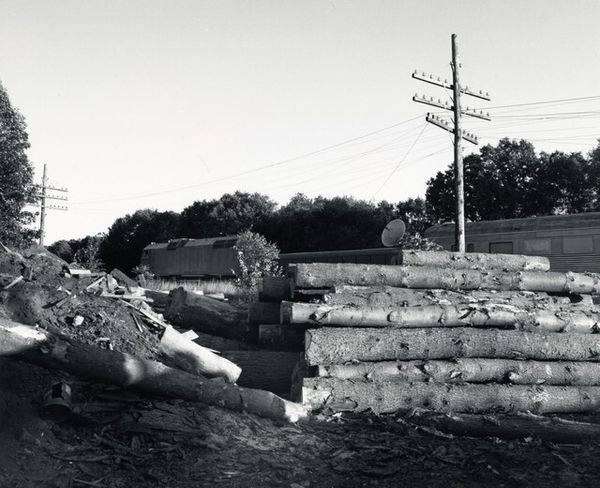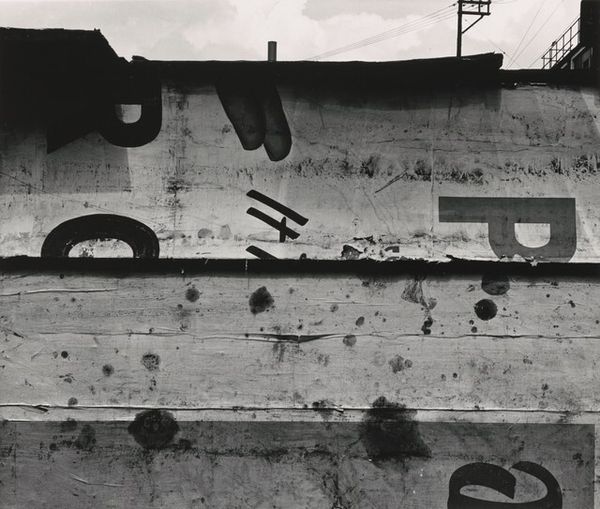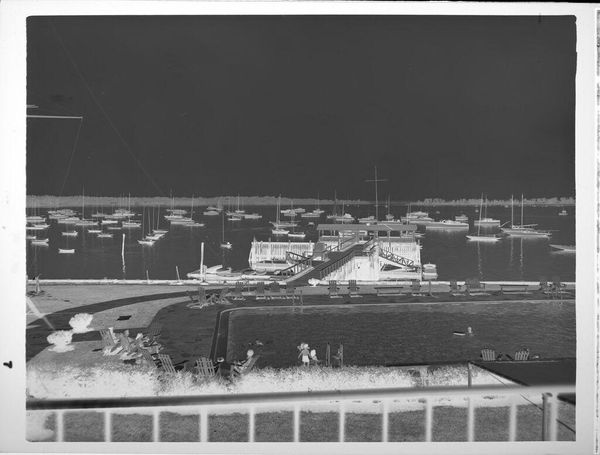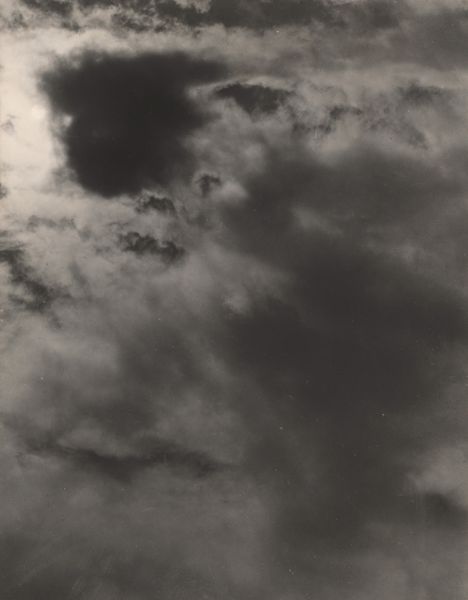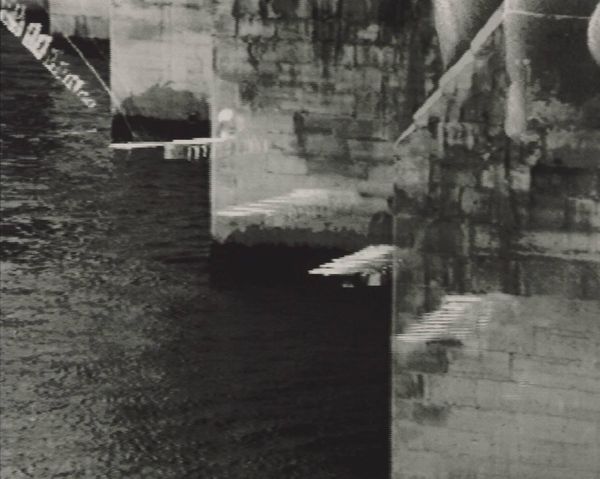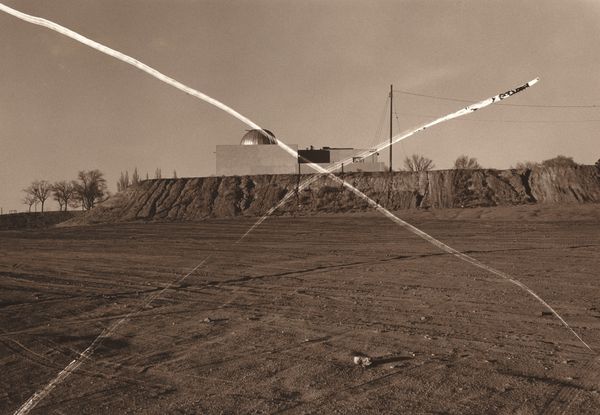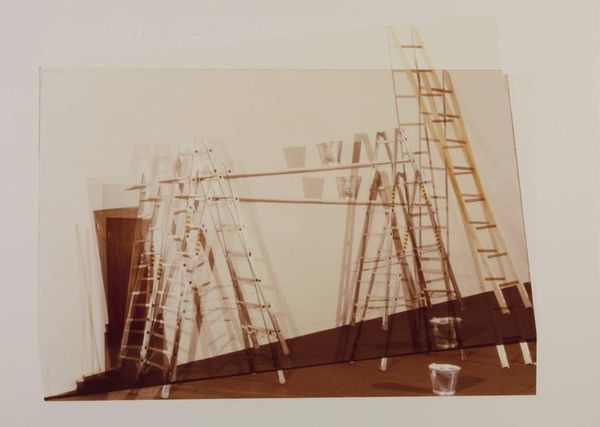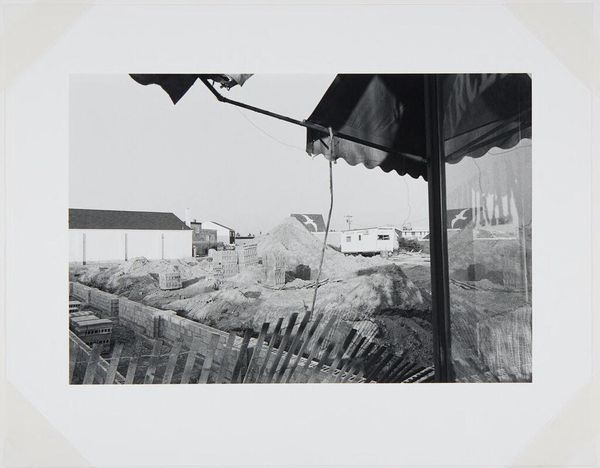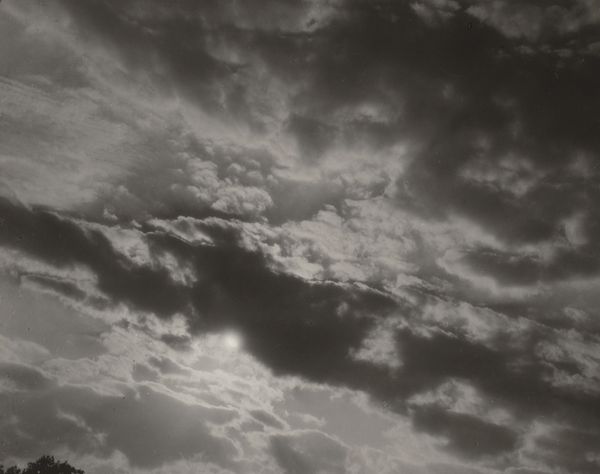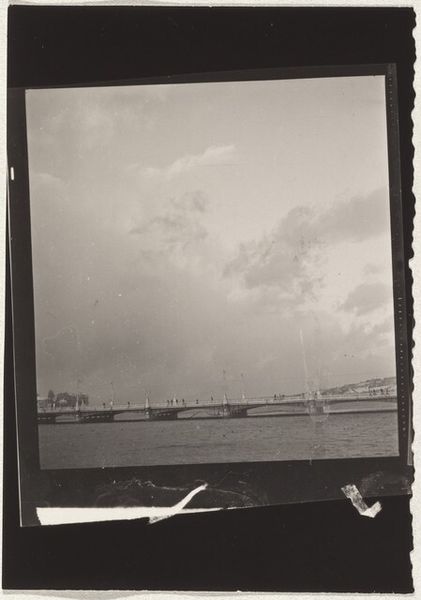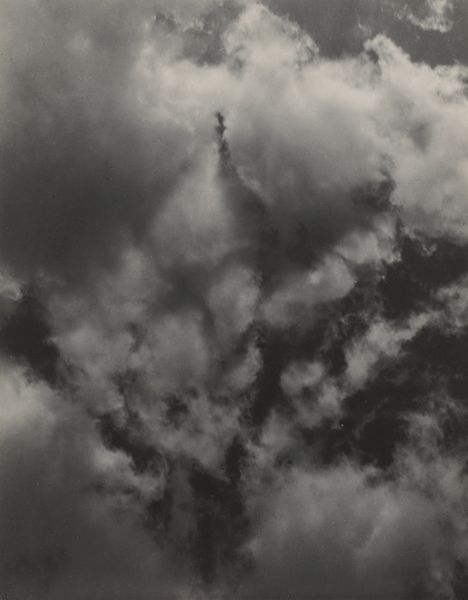
photography
#
conceptual-art
#
appropriation
#
landscape
#
photography
#
black and white
#
monochrome photography
#
monochrome
#
monochrome
Dimensions: image: 23.9 × 34.6 cm (9 7/16 × 13 5/8 in.) sheet: 27.6 × 35.3 cm (10 7/8 × 13 7/8 in.)
Copyright: National Gallery of Art: CC0 1.0
Editor: Here we have Thomas Barrow's "Dart, from the series, Cancellations," possibly created between 1974 and 1994, a black and white photograph that at first glance appears to document a common commercial landscape, but then I noticed those lines slashing across the image… What’s going on here? What’s your interpretation? Curator: Well, it’s important to understand the social landscape Barrow was working in. This is post-Pop Art, and artists were increasingly interested in critiquing the pervasiveness of consumer culture and its impact on the American landscape. He re-photographs his own photos then manipulates those, obscuring sections and surfaces. These "cancellations," those sharp lines, were made physically on the photograph, so the gesture is integral. They are a very physical response against something. Editor: So, the artist is directly interfering with his own work, a sort of artistic intervention into what could be construed as mere documentation. But against what? Curator: Exactly. Barrow isn’t simply documenting the landscape; he's actively disrupting it, visually at least. The marks deny easy consumption of the image, interrupting our gaze of the commercial strip. Think about what symbols are present here: Kmart, photography services, discount film, maybe Goodwill, and then that looming dart shape – likely a sign. What do these businesses represent to you? Editor: A relentless drive towards consumerism and a society geared to sell us everything. Curator: And these ‘cancellations’ across the photographic surface—what could these possibly signal, in your mind? Editor: A way of erasing, overwriting, and contesting. Like saying that a photograph doesn’t always have to document; it can resist too. So, what did you learn about this image in our conversation? Curator: That even seemingly simple images can become powerful critiques of societal norms and the forces that shape them, prompting us to consider art’s potential to enact visual and social change. Editor: It’s been enlightening to consider how these lines work as a direct response to this pervasive culture.
Comments
No comments
Be the first to comment and join the conversation on the ultimate creative platform.
